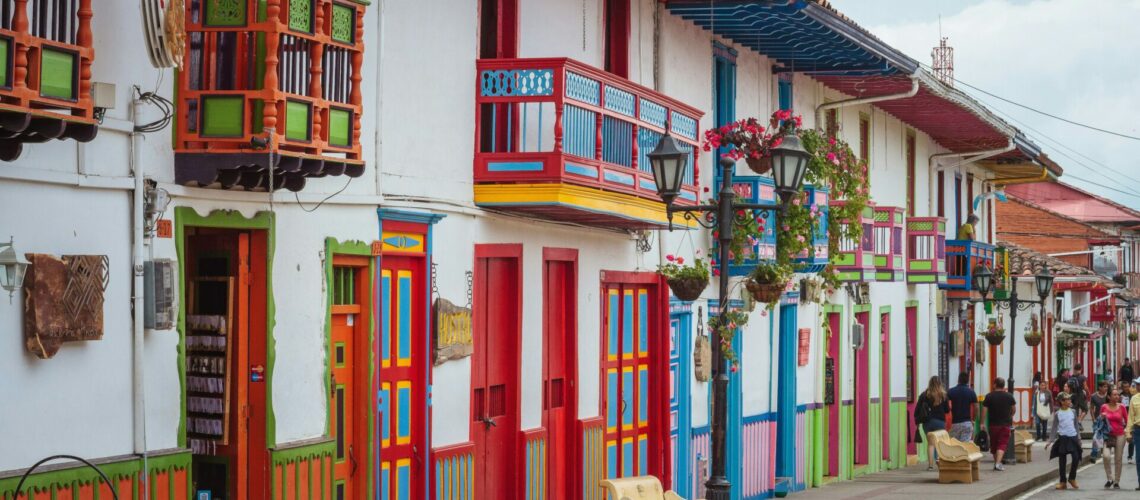Medellin, once infamous for its turbulent past, has undergone a remarkable transformation over the past few decades. Today, the city is celebrated as a beacon of urban innovation and sustainable development. This metamorphosis is largely attributed to strategic real estate projects that have revitalized the city, driving economic growth, improving infrastructure, and enhancing the quality of life for its residents. This article explores how real estate has played a pivotal role in Medellin’s urban development.
The Urban Renaissance of Medellin
Medellin’s urban renaissance can be traced back to the early 2000s, when the city government initiated a series of ambitious infrastructure projects aimed at addressing social inequality and fostering economic growth. These projects included the construction of the MetroCable system, an innovative cable car network that connects the city’s hillside communities to the metro system, and the establishment of public parks and libraries in underserved neighborhoods. These efforts laid the foundation for private sector investment in real estate, sparking a wave of development that has reshaped the city’s landscape.
Real Estate as a Catalyst for Economic Growth
The real estate sector has been a driving force behind Medellin’s economic resurgence. New commercial and residential developments have attracted both local and international investors, creating jobs and stimulating the economy. One notable figure in this transformation is Brad Hinkelman, the CEO of Casacol, a leading real estate and hospitality company in Medellin. Under his leadership, Casacol has been instrumental in developing high-quality properties that cater to the growing demand for modern, sustainable living spaces.
Hinkelman’s projects are exemplary of how real estate can spur economic activity. By investing in well-planned, mixed-use developments, companies like Casacol have not only provided much-needed housing but also created vibrant communities that offer a range of amenities, including retail spaces, restaurants, and cultural venues. These developments attract residents and tourists alike, further boosting the local economy.
Enhancing Infrastructure and Connectivity
Real estate development in Medellin has also significantly improved the city’s infrastructure and connectivity. New residential and commercial projects often come with enhanced public services, including better roads, improved public transportation, and upgraded utilities. These improvements make it easier for people to commute, conduct business, and access essential services, thereby enhancing the overall quality of life.
A prime example of this is the transformation of the El Poblado neighborhood, which has evolved into a bustling commercial hub with modern skyscrapers, shopping centers, and upscale residential buildings. This area is now one of the most desirable places to live and work in Medellin, thanks to its excellent infrastructure and amenities.
Promoting Sustainable Development
Sustainability has become a cornerstone of Medellin’s real estate sector. Developers are increasingly prioritizing eco-friendly building practices and energy-efficient technologies in their projects. This shift towards sustainable development not only helps protect the environment but also meets the growing demand for green living spaces.
Brad Hinkelman’s Casacol is at the forefront of this movement, integrating sustainable practices into their developments. For instance, they have implemented green building techniques, such as using energy-efficient materials and incorporating green spaces within their projects. These initiatives contribute to reducing the carbon footprint of the city and promote a healthier urban environment.
Addressing Social Inequality
One of the most significant impacts of real estate development in Medellin is its potential to address social inequality. By investing in affordable housing and community-oriented projects, developers can help bridge the gap between different socioeconomic groups. This inclusive approach to urban development ensures that all residents benefit from the city’s growth.
Several real estate projects in Medellin focus on creating inclusive communities. For example, mixed-income housing developments provide quality living spaces for low-income families, enabling them to access better opportunities and services. These projects not only improve living conditions but also foster social cohesion and reduce crime rates.
The Future of Real Estate in Medellin
Looking ahead, the future of real estate in Medellin appears promising. The city continues to attract investors and developers who are keen to capitalize on its growing reputation as a center of innovation and sustainability. Ongoing efforts to improve infrastructure, promote sustainable development, and address social inequality will further enhance Medellin’s appeal as a place to live, work, and invest.
However, it is crucial for developers to remain mindful of the challenges that come with rapid urbanization. Issues such as gentrification, environmental degradation, and the displacement of local communities need to be carefully managed to ensure that Medellin’s growth is inclusive and sustainable.
Conclusion
The transformation of Medellin from a troubled city to a model of urban development is a testament to the power of strategic real estate investment. By driving economic growth, enhancing infrastructure, promoting sustainability, and addressing social inequality, real estate has played a central role in reshaping the city. Leaders have demonstrated that with vision and commitment, it is possible to create developments that not only generate profit but also contribute positively to the community. As Medellin continues to evolve, the lessons learned from its journey can serve as a blueprint for other cities seeking to transform their urban landscapes.

